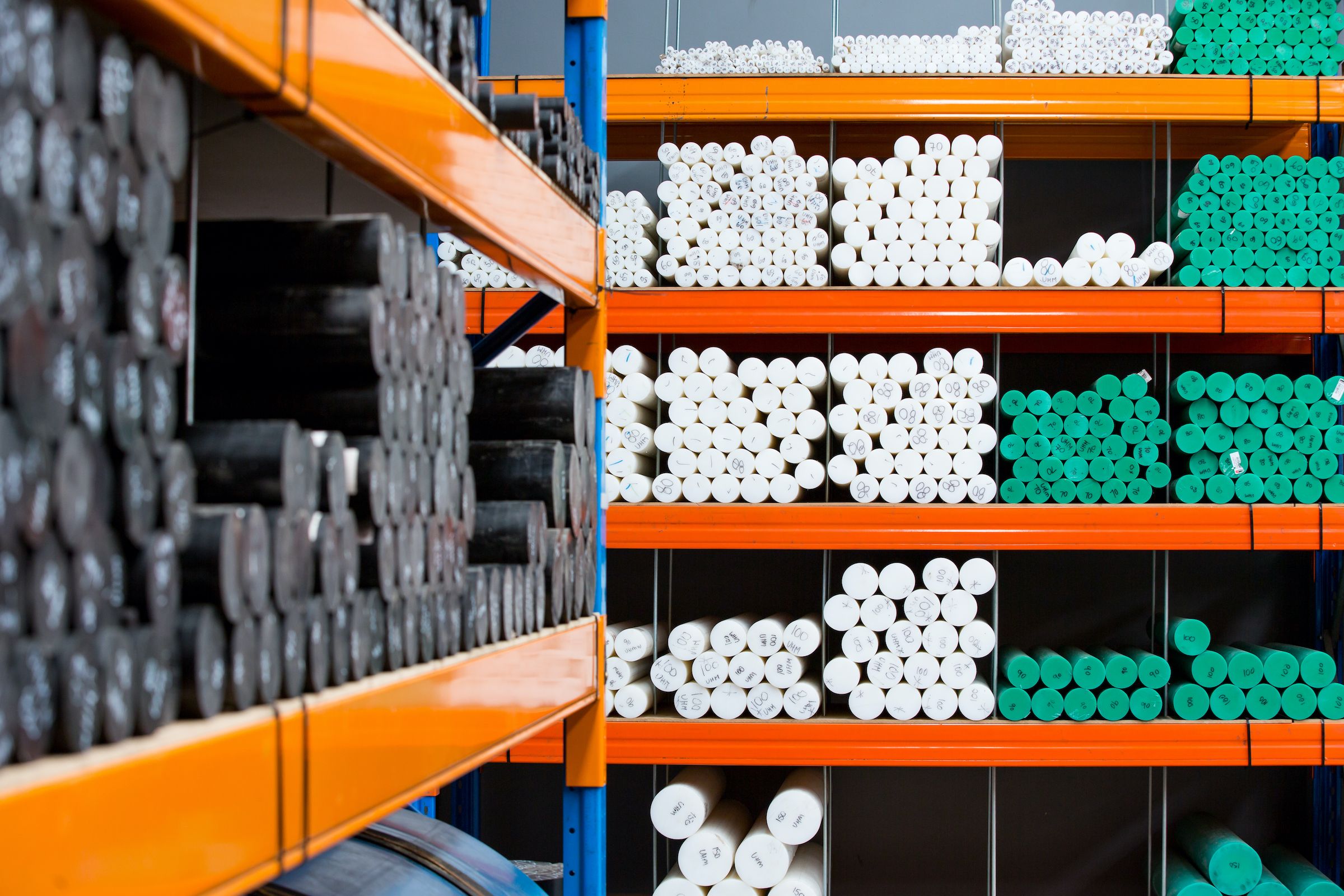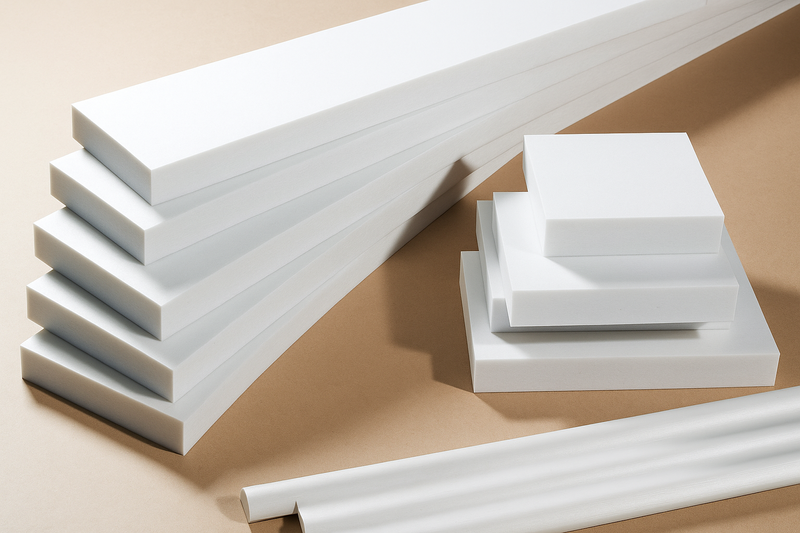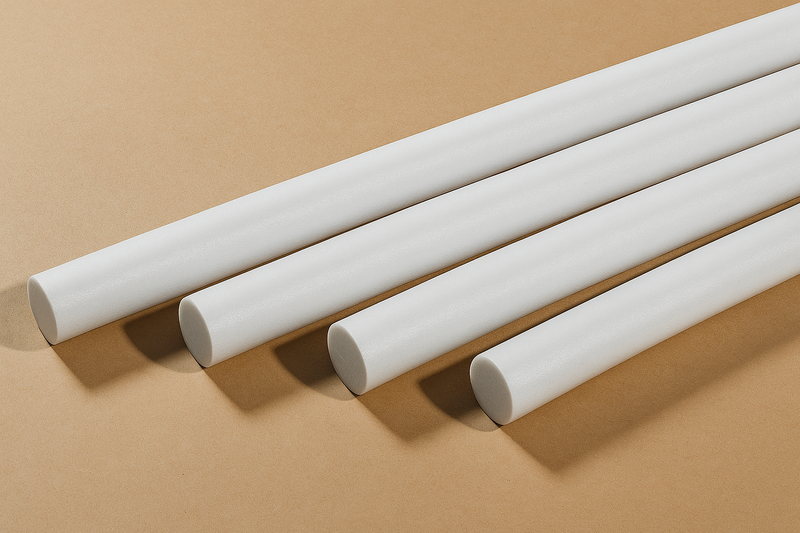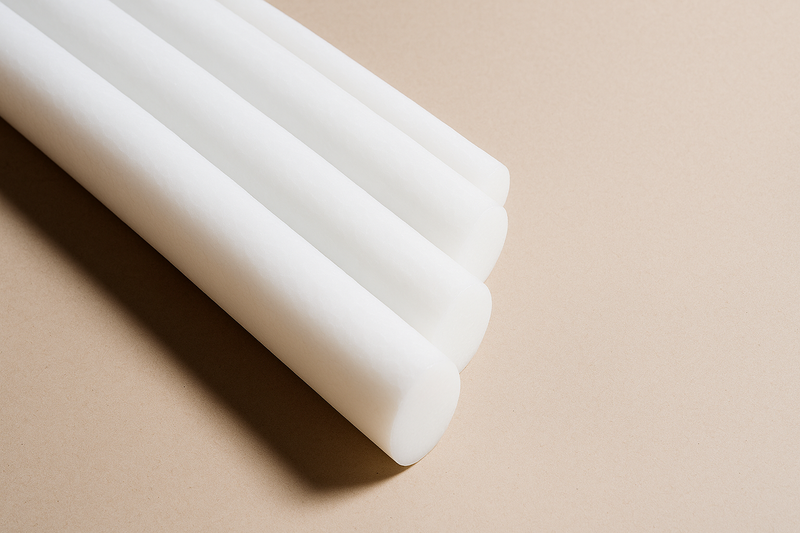At a glance
- HDPE is a high-performance thermoplastic valued for its strength, chemical resistance, impact durability, UV stability, and widespread recyclability.
- It is commonly used across industries, including construction, marine, packaging, agriculture, mining, and energy.
- Applications range from portable water piping, landfill geomembranes, and aquaculture cages to milk bottles, irrigation systems, slurry pipelines, and gas distribution networks.
- HDPE enables safer infrastructure, reduces maintenance costs, and supports sustainability and circular economy goals across industries.
High-Density Polyethylene (HDPE) is one of the most widely used and versatile thermoplastics in modern industry. A high strength-to-density ratio, excellent chemical resistance, impact durability, and long-term stability under UV exposure with suitable additives are the defining characteristics of HDPE. These properties allow HDPE to outperform traditional materials such as steel, timber, or concrete in most industrial and commercial applications.
What sets HDPE apart is its adaptability: it can be extruded, moulded, or welded into forms ranging from pressure-rated pipelines to lightweight packaging. Its inert nature ensures safe contact with drinking water and food. In addition, its recyclability supports sustainable, circular economy goals.
While it may not match the high-temperature performance of some engineered plastics, HDPE delivers an unmatched balance of versatility, strength, and durability. These qualities make it a trusted material across a wide range of industries.
This article covers the top industries that rely on HDPE for its properties and real-world applications.
Construction and Infrastructure
HDPE is the material of choice in civil engineering and infrastructure for its balance of mechanical strength, flexibility, and resistance to both chemical and environmental degradation.
HDPE offers superior durability. It does not corrode, rust, or scale like metal, and it resists cracking under dynamic loads or shifting soils, unlike concrete. Its long service life and low-maintenance profile make it a cost-effective and reliable option for assets expected to last decades.
Applications of HDPE in construction and infrastructure include:
- Pressure and non-pressure piping systems for potable water, stormwater, and sewage
- Geomembranes used in landfill cells and groundwater protection
- Conduits and protective barriers for underground electrical and communication lines
- Modular formwork panels for repeat concrete casting
HDPE pressure pipes have steadily replaced cast iron and steel in water distribution networks across Australia because they can be fusion-welded into seamless, leak-free systems that resist both internal chemical attack and external soil movements, reducing the risk of leaks and extending service life.
Marine and Aquaculture
The marine use requires materials that can perform reliably in continuous saltwater exposure, intense UV radiation, and constant mechanical stress from currents and waves. HDPE is one of the very few polymers that maintains integrity under these conditions, making it the best material for coastal and offshore structures.
Its non-corrosive nature, low water absorption, and high impact resistance provide clear operational advantages over timber, metal, and other engineering plastics traditionally used in marine applications.
Applications of HDPE in marine and aquaculture include:
- Floating docks, pontoons, and marina walkways
- Offshore fish cages and aquaculture pens
- Marine pipelines for intake, discharge, or dredging
In practice, products like HDPE pontoons have demonstrated service lives exceeding 20 years in coastal marinas, providing reliable flotation with minimal maintenance. Similarly, aquaculture operators favour HDPE cages for their resistance to biofouling and mechanical stress.
Packaging and Consumer Goods
HDPE is widely recognised for its critical role in packaging and consumer goods and valued for its strength, machinability, food safety compliance, and cost efficiency.
It can be blow-moulded or injection-moulded into durable yet lightweight products, which reduces logistics costs while meeting strict hygiene and safety requirements. Furthermore, its recyclability supports closed-loop systems, a growing requirement under modern sustainability regulations.
Applications of HDPE in packaging and consumer goods include:
- Food and beverage bottles, containers, and packaging items
- Household chemical containers and personal care bottles
- Reusable crates, pallets, and protective packaging
- Caps, closures, and rigid transport packaging
The HDPE milk bottle remains a leading example in packaging, with reprocessed resin now widely reintegrated into production to meet sustainability goals without compromising food safety or quality.
Agriculture and Irrigation
Agricultural operations are among the most demanding industries. This sector requires materials that can withstand constant outdoor exposure, fluctuating temperatures, and frequent contact with fertilisers and chemicals.
HDPE meets these challenges through its high UV resistance and chemical inertness, allowing it to function reliably in demanding agricultural applications. Its flexibility and lightweight nature also make installation and handling easier for large-scale farm systems.
Applications of HDPE in agriculture and irrigation include:
- Drip irrigation tubing and sprinkler lines for efficient, targeted water delivery
- Large-volume water storage tanks and livestock troughs that resist corrosion and chemical damage
- Greenhouse coverings and silage protection films designed for long-term outdoor durability
For instance, HDPE-based drip irrigation systems have proven critical for efficient water management, significantly reducing evaporation losses while providing targeted delivery to crops in water-scarce regions such as Australia’s inland farming zones.
Mining and Industrial Processing
Mining and heavy industry place materials under constant abrasive and chemical stress. HDPE is engineered to withstand slurry flows, aggressive chemicals, and mechanical impacts that quickly degrade steel or concrete. Its abrasion resistance, coupled with excellent chemical stability, reduces downtime and maintenance costs in environments where reliability is critical.
Applications of HDPE in mining and industrial processing include:
- Slurry and tailings pipelines
- Acid- and alkali-resistant storage tanks
- Wear-resistant liners for chutes, hoppers, and bins
HDPE pipelines are widely deployed to transport abrasive tailings at mine sites. Fusion-welded joints provide secure connections without corrosion points, increasing service life compared to steel pipelines and reducing the risk of environmental contamination from leaks.
Energy and Utilities
Energy infrastructure systems rely on materials that meet stringent safety standards, withstand pressure, and perform reliably under prolonged environmental stress.
HDPE addresses these requirements while offering installation and operational efficiencies through lightweight handling and fusion welding. Its performance has been proven in both gas distribution and renewable energy infrastructure.
Applications of HDPE in energy and utilities include:
- Natural gas distribution pipes that safely handle pressurised systems
- Underground and submarine conduits for electrical and telecommunications cables
- Structural and protective components in renewable energy systems exposed to harsh outdoor conditions
Gas utilities have adopted HDPE piping for distribution networks because of its high-pressure rating, flexibility, and resistance to ground movement, providing a safer alternative to brittle cast iron and corrosion-prone steel. Additionally, HDPE conduits protect high-voltage cabling in solar farms and wind installations, ensuring longevity under harsh UV and weather exposure in renewable projects.
Beyond energy and utilities, HDPE’s adaptability supports a wide range of specialised uses where safety and durability are essential. For instance, in medical applications, it is used for prosthetics, sterile packaging, and laboratory equipment.
Environmental engineers rely on HDPE geomembranes for landfill liners and containment ponds to prevent leachate escape. It is also a mainstay in industrial films and consumer bags, where its tear resistance and processability support a wide range of industrial and consumer products. Similarly, HDPE plastic rods are commonly used for making bearings and bushings.
The bottom line is that High-Density Polyethylene (HDPE) has proven itself as a critical engineering material across construction, marine, packaging, agriculture, mining, energy, and beyond. Its resistance to corrosion, impact, chemicals, and UV degradation gives it a service life far exceeding many traditional materials, while its recyclability supports the shift toward more sustainable supply chains.
As industries move toward safer, more durable, and environmentally responsible materials, HDPE will remain at the centre of innovation and infrastructure growth.
Ready to source dependable HDPE solutions? Explore ePOL’s online portal to compare materials, check live stock, and place orders instantly with no minimum order quantities. Contact ePol today for technical advice or supply options. Our team can guide you in selecting the right HDPE sheets and rods to match your needs.
FAQs
Can HDPE be customised for specialised projects?
Yes, HDPE can be customised for specialised projects. It can be extruded, moulded, or machined into a wide range of profiles, sheets, and components. It is also available in UV-stabilised, food-grade, or chemical-resistant grades, making it adaptable for construction, marine, agricultural, and industrial applications.
How does HDPE compare with other engineering plastics?
HDPE offers a strong balance of impact resistance, chemical resistance, and cost-effectiveness compared to alternatives like PVC, PP, or ABS. While it may not provide the same high-temperature resistance as materials such as PEEK or PTFE, HDPE excels in outdoor durability, corrosion resistance, and ease of processing.
Is HDPE suitable for high-heat environments?
No, HDPE has a lower maximum service temperature (typically around 80–100°C) compared to some engineering plastics, which restricts its use in high-heat environments.
Can HDPE be repaired if damaged?
HDPE components can often be repaired through plastic welding techniques, where heat fuses the material to restore integrity. In piping systems, electrofusion and butt fusion welding are commonly used to achieve strong, leak-free repairs.
Are there limitations to using HDPE in certain applications or environments?
HDPE is not suitable for high-pressure steam systems, high-heat environments, or applications requiring extreme stiffness. It also has a relatively high coefficient of thermal expansion, which must be considered in precision engineering or long pipe runs exposed to temperature fluctuations.








